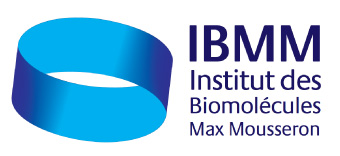Designing donor-acceptor cyclopropanes for the synthesis of valuable building blocks
Séminaire Chimie ED459
Dr. Gaëlle
Le Jeudi 08 Juin 2023 à 14h
ENSCM, Amphithéâtre Godechot (240 av. Émile-Jeanbrau)
Date de début : 2023-06-08 14:00:00
Date de fin : 2023-06-08 15:30:00
Lieu : ENSCM amphi Godechot (240 av E. Jeanbrau)
Intervenant : Dr. Gaëlle
ISM2 Institut des Sciences Moléculaires de Marseille, UMR 7313, CNRS, Aix-Marseille Université, École Centrale Marseille
Donor-Acceptor Cyclopropanes (DACs) are remarkable chemical species[1] that have been extensively used as valuable 1,3-dipole synthetic building blocks.[2] The opposing electronic properties of the vicinal substituents combined with the ring strain of the cyclopropane ( 27.5 kcal.mol–1) not only direct but also facilitate the bond scission. This push-pull effect has found wide applications in natural product synthesis and drug development. Lately, authors have been interested in studying different donor patterns and step away from the classical O, N or phenyl donor substituents. Interestingly, Werz and coworkers showed that the cyclopropyl group can act as an excellent donor one.[3] The authors demonstrated that various (3+n) cycloaddition reactions could be accomplished, and the corresponding cyclic systems obtained were substituted with the valuable small ring. Inspired by this work, our group also contributed to the field. Herein, we report that a common original biscyclopropane DAC could lead, depending on the conditions used, either to the challenging carbocyclic eight-membered ring or the interesting benzocyclobutene building block. Strategies, synthesis of precursors, scope and limits of the reaction and mechanistic studies will be described and discussed.
References
1. For seminal report on DACs, see: a) E. Wenkert, M. E. Alonso, B. L. Buck-Walter, K. J. Chou, J. Am. Chem. Soc. 1977, 99, 857; b) H.-U. Reissig, E. Hirsch, Angew. Chem. Int. Ed. 1980, 19, 813.
2. For recent reviews on DACs, see: a) H. K. Grover, M. Emmett, M. A. Kerr, Org. Biomol. Chem. 2015, 13, 655; b) special issue: “Chemistry of Donor–Acceptor Cyclopropanes and Cyclobutanes”, Isr. J. Chem. 2016, 56, 367; c) E. M. Budynina, K. L. Ivanov, I. D. Sorokin, M. Ya. Melnikov, Synthesis 2017, 49, 3035; d) K. Ghosh, S. Das, Org. Biomol. Chem. 2021, 19, 965; e) Y. Xia, X. Liu, X. Feng, Angew. Chem. Int. Ed. 2021, 60, 9192.
3. A. Kreft, P. G. Jones, D. B. Werz, Org. Lett. 2018, 20, 2059.
Contact local ICGM : Prof. >« >Jean-Marc
